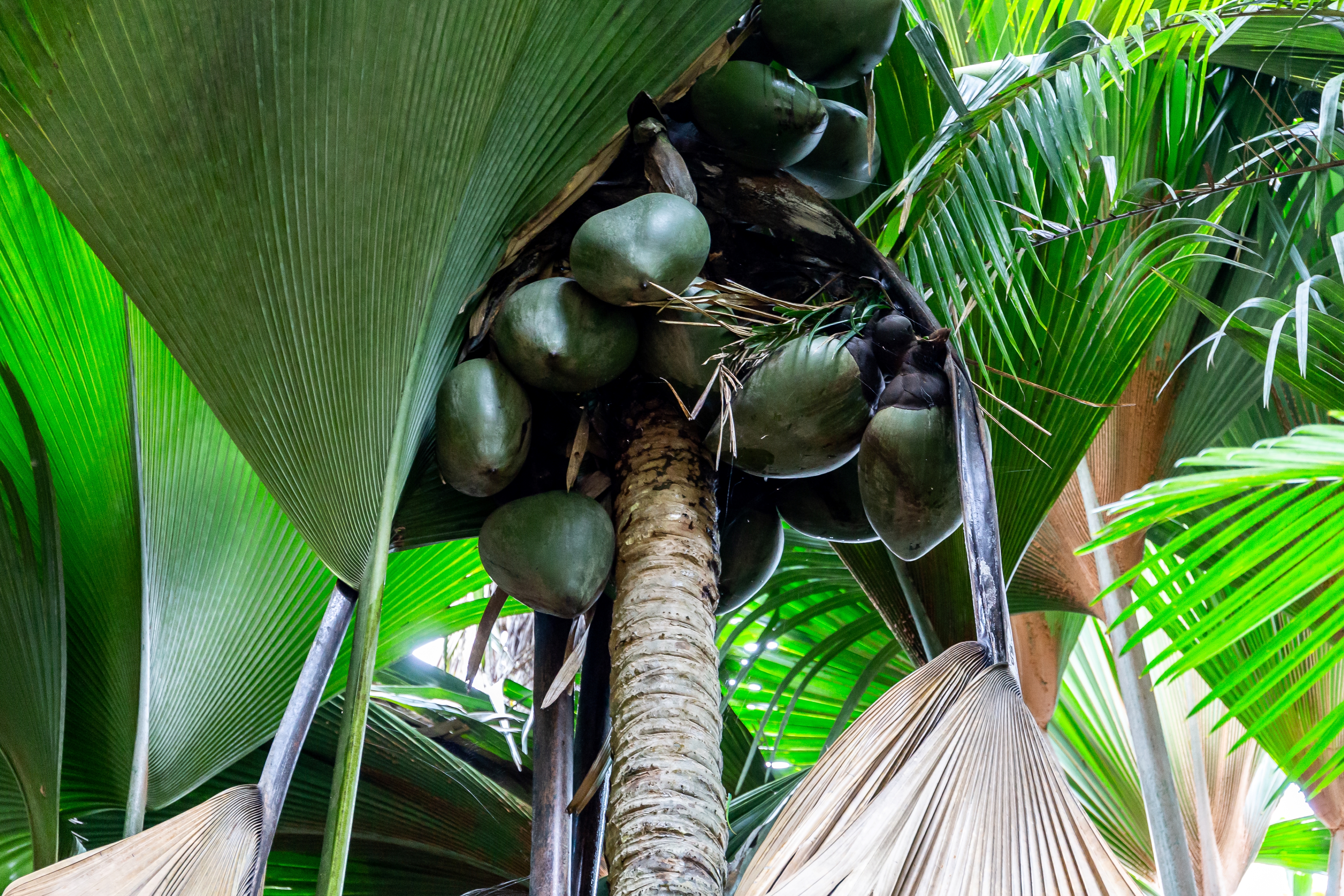Seeds are superheroes – they can grow into our forests and crops, get extracted for oil, and be used in pharmaceuticals. In fact, they’re so important that there’s even a “doomsday” seed vault. But when it comes to the seed of the coco de mer, the biggest seed in the world, things get a little less wholesome – at least on the face (or backside) of it.
An island giant
The coco de mer, also known as the double coconut, is a palm that grows on the islands of Praslin and Curieuse in the Seychelles. Everything about it is big; it can grow up to 110 feet (33.5 meters) tall, sports leaves more than 9 meters (30 feet) long, and also produces the largest fruit ever recorded (a hefty 90 pounds, or 41 kilograms).
Perhaps its most unique feature is another record-breaker – coco de mer seeds are the biggest in the world. They can measure up to 50 centimeters (19.7 inches) in diameter (fun fact: that’s about one-third of Danny DeVito) and can weigh up to a whopping 25 kilograms (55 pounds), roughly the same as an adult bulldog.
Butts in the Seychelles
While we’re at it, let’s get the most important bit out of the way – you’ve seen the picture, after all. The seed is shaped like a butt. The word “sexy” was also thrown around the IFLScience office, but that’s probably down to personal preference.
Both its size and unique shape have long made the seed coveted by tourists and illegal merchants alike. Their resemblance to female buttocks was apparently a welcome sight to lonely sailors – make of that what you will.
Speaking of sauciness, island legends also suggest that the seeds are produced by the parent trees getting it on during either a stormy night or a full moon. They are said to walk across the island in search of a partner, meet in a loving embrace, and next thing you know, tree baby.

We know what you’ve been up to in the dark, coco de mer.
Image credit: Aleksandra Tokarz/Shutterstock.com
No need for speed
Unlike seeds that are designed for dispersal far and wide, coco de mer seeds are pretty much the opposite. They drop from the parent tree and stay where they are, waiting for the parent tree to die, after which they can use its nutrients for growth. That can take a while, as coco de mer are estimated to live for over 200 years. Even when the seed eventually germinates, it can take between 15 to 50 years for the tree to grow and reach maturity.
A species at risk
Sadly, for butt and botany enthusiasts alike, the coco de mer is listed as an endangered species on the IUCN Red List, with only around 8,000 mature trees left in the wild. This is thought to be the result of overharvesting.
Normally, another of the biggest threats to endangered species is inbreeding – with a limited pool of partners, the gene pool too becomes limited and harmful mutations more likely. This doesn’t seem to be a problem for coco de mer though, as a recent study revealed that getting from seed to sapling is more successful when the parent trees are more closely related. Known as inbreeding euphoria (not a term we thought we’d be writing today), this phenomenon might be the result of evolving on an isolated island.
The trees and seeds are also well protected by authorities, with legal protection under both the Seychelles’ law and international CITES regulations. The plants are guarded and sometimes even caged to protect them from poachers, who attempt to nab the seeds and sell them for a high price. Fire is also considered to be a significant threat; a firebreak has been placed around the palm forest as a protective measure.
Looks like the coco der mer’s butt is covered.
Source Link: The World’s Biggest Seed Also Looks Pretty Suggestive